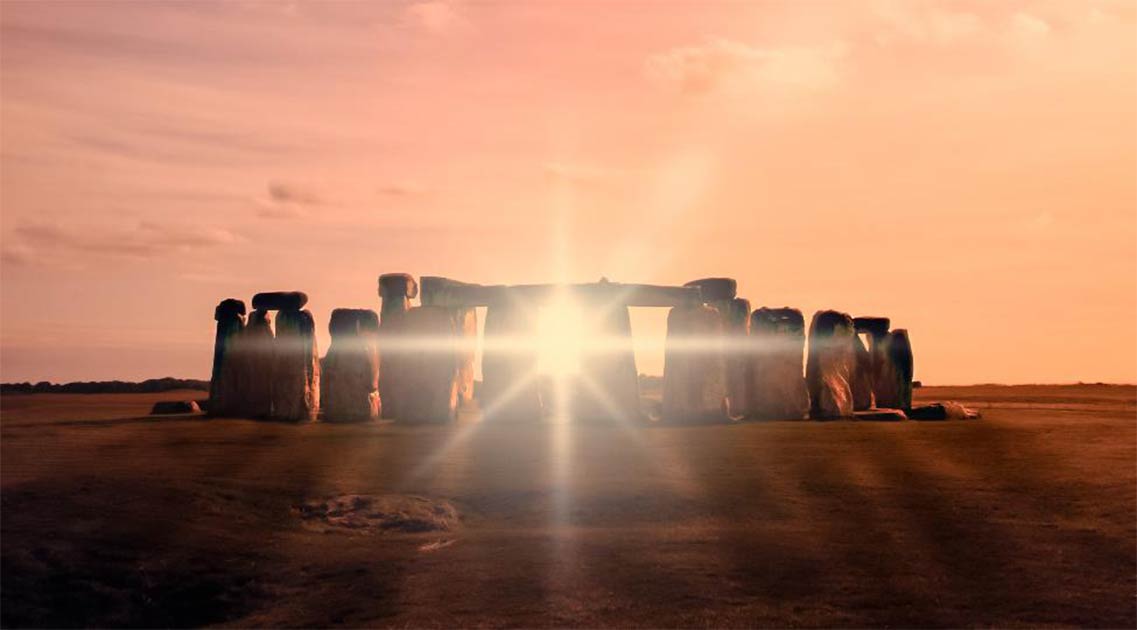The Summer Solstice at Stonehenge - A History-Making Livestream
In the northern hemisphere, when the summer solstice occurs around June 21, the North Pole is tilted about 23°27´ toward the Sun, which itself is traveling its longest path through the sky, and that day therefore has the most daylight and is celebrated as the longest day. Stonehenge is one of the places many people congregate to witness an amazing summer solstice event.
At the world renowned ancient standing stones, Stonehenge, in England, which was designed according to the annual solar cycle, rather than thousands of people gathering to bring in the solar event, this year things will be much different due to COVID-19. In place of the usual big public celebration with thousands of people binging in the new season at the stone circle, for the first time in history the site will be empty and the astronomical event will be streamed to Sun worshippers online.

Stonehenge at dawn , Wiltshire, UK. (Tony Craddock /Adobe Stock)
The Digitization Of Archaeoastronomy
Nichola Tasker, the director of the Stonehenge monument, told The Telegraph that it was considered whether a public event could have proceeded safely, and she said, “We would have dearly liked to host the event as per usual, but sadly, in the end, we feel we have no choice but to cancel.” However, she hopes that a livestream of the sun rising behind the famous Heel Stone will offer an “alternative opportunity” for people near and far to connect with this deeply-spiritual place at this special time of year, and she looks forward to “welcoming everyone back next year.”
What is a tad ironic in all this is that in ancient times when a disease, famine, or other natural disaster struck communities, folks gathered at these key religious (astronomical) dates to perform rituals and ceremonies asking for the gods’ help in overcoming their challenges. However, there weren’t 7.5 billion of us back then and social distancing happened naturally.
2020, A Summer Solstice to Remember
Occurring on Saturday, June 20, 2020, this year’s summer solstice will be like no other we will see in our lifetimes. The solstice occurs as the Earth's north pole reaches its maximum tilt towards the Sun. And this year, only nine hours after the solstice sunrise, the new Moon will pass perfectly between the Earth and the Sun, creating an annular solar eclipse visible to observers across Africa and Asia, and this is an exceptionally infrequent occurrence.
According to an article in Forbes, to have a solar eclipse, “you don't just need a new Moon but you need a new Moon to occur precisely when the Moon crosses the Earth-Sun plane.” While the Earth traces an elliptical path around the Sun and the Moon makes an elliptical orbit around the Earth, the two ellipses are tilted with respect to one another a 5.2°. This means the Sun and the Moon are small enough as seen from Earth that most new Moons don't result in any sort of visual eclipse at all.

Annular solar eclipse in desert with a silhouette of a dromedary camel. Liwa desert, Abu Dhabi, United Arab Emirates. (Kertu /Adobe Stock)
And with the Sun and Moon each making a circle about 0.5° in diameter on the sky, only about one in five or six new Moons results in either a partial, annular, or total eclipse of the Sun and a solar eclipse occurs on a solstice just once every 82 years.
- 6 Spectacular Summer Solstice Celebrations Around the World
- Cecil Chubb: The Man Who Bought Stonehenge
- Megalithic Examination Explains Why Stonehenge was Built on Salisbury Plain
Disrupting the 82 Year Solstice Eclipse Cycle
If this event only happens every 82 years, why then did we have one of these “rare” events on the June solstice in 1982 and 2001, and why are we having this one in 2020? This is caused by a 19-year eclipse cycle is known as a Metonic Cycle, which dates all the way back to “Meton” of Athens who lived 2500 years ago. Every 19 solar years contain almost exactly 235 lunar months (full cycles, from new Moon to new Moon,) meaning that eclipses recur in a 19 year periodic cycle, which is why we are experiencing them more often at the present, but after the next one in 2058 this phenomena won’t happen again for nearly two full centuries.
You can watch the livestream Stonehenge solstice event on the English Heritage Facebook page on Saturday June 20th at 9:26 pm GMT (4:26 pm EDT) and the sunrise will be streamed live on Sunday June 21 at 4:52 am GMT, (Saturday 11:52 pm EST.)
Top Image: Stonehenge will be empty for the summer solstice in 2020. Source: Stephen /Adobe Stock
By Ashley Cowie

















